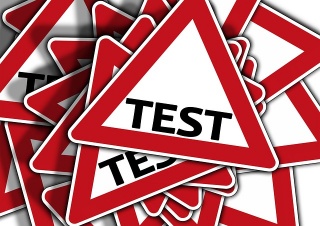Introduction to entrepreneurship/IENT102/Presentation/Quiz
From WikiEducator
Jump to: navigation, search
The questions published at the end of each learning pathway are re-used for the knowledge test for learners interested in earning a digital badge or certificate of participation for the Introduction to entrepreneurship (IENT102) micro-course. Please consult the Certify participation page for more information.
True - false questions
Indicate whether the following statements are true or false:
- The aim of a presentation is usually to inform, influence and/or inspire the audience.
- True
- Correct.
- False
- Incorrect. These are the main purposes of a business presentation.
- True
- In a presentation, it’s important to include detailed and comprehensive information with extensive data to support all your assertions.
- True
- Incorrect, many people include too much information or data in their presentation.
- False
- Correct, a business presentation should summarise the most important points and not provide extensive detail.
- True
- You can download any image you like from the internet to use in your presentation, because they are all in the public domain.
- True
- This is not true. Check the learning materials on Visuals to find out about public domain and copyright.
- False
- You are right - this statement is not true.
- True
- You can often use the same presentation again and again with different audiences.
- True
- No, effective business presentations should be tailored for different audience needs.
- False
- Correct.
- True
Multiple choice questions
- In the context of this course, which of the following is NOT mentioned as one of your responsibilities, when giving a presentation?
- Being prepared
- This is one of your key responsibilities when giving a presentation.
- Organising your content
- This is an important responsibility when giving a presentation. Your audience needs to be able to follow the organisation of your content, if they are to understand your presentation.
- Being ethical
- This is one of your key responsibilities when giving a presentation. You need to show that you are being respectful of your audience, and that you are trustworthy.
- Including variety in your content
- You’re right. This is not mentioned as one of your responsibilities when giving a presentation.
- Being prepared
- In the context of this course, which ONE of the following statements about making an investor pitch is INCORRECT?
- An investor pitch is not just a summary of your written business plan
- This is correct. You need to think about your particular audience, and about presentation skills when preparing an investor pitch.
- An investor pitch is typically made up of at least 25 slides
- Well done! This is incorrect. A pitch deck should not include more than 15-20 slides maximum.
- It’s important to include interesting visuals such as graphs, charts, and/or images
- This is correct.You don’t want to bombard your audience with charts and graphs, but some well-selected visuals can be extremely helpful.
- An investor pitch should include a summary of the vision and mission of the company
- This is correct. The ‘Mission/Vision’ slide helps potential investors understand how you visualise (and sum up) your company.
- An investor pitch is not just a summary of your written business plan
- In the context of this course, which ONE of the following is NOT given as a possible purpose of a visual?
- Decoration
- This is mentioned as one possible purpose of a visual - a decorative visual can make something look better and/or draw attention to it.
- Analogical
- This is mentioned as one possible purpose of a visual - an analogical visual highlights similarities or differences between things.
- Entertainment
- You’re right. This is NOT mentioned as one possible purpose of a visual.
- Representational
- This is mentioned as one possible purpose of a visual - a representational visual creates meaning by associating it with something that is common knowledge or already known by the audience.
- Decoration
- Which ONE of the following statements about public domain and Creative Commons media (such as images, or video) is FALSE?
- When adding media to a presentation, it is important that you do not breach anyone’s copyright
- This statement is true.
- You can use Creative Commons licensed images because they are in the public domain
- Well done! This is false. The public domain refers to images where the copyright has expired, whereas Creative Commons licensed works are still protected by Copyright.
- Even if content is covered by a Creative Commons license, you still have to make sure that you properly attribute the content
- This statement is true.
- There are several types of Creative Commons License
- This statement is true. There are six different Creative Commons license types.
- When adding media to a presentation, it is important that you do not breach anyone’s copyright
